At Belovedsaffron.com we believe that every chef has something unique and delicious to share with their taste buds! If you have any special recipes or would like to contribute an article for our blog section, please don’t hesitate to contact [email protected].
We are devoted to promoting sustainable eating practices that respect cultures worldwide and inspire us with new flavors each day. Let’s work together towards bettering the Earth while enjoying scrumptious dishes!
For now, love yourself and enjoy this one ...
Now love yourself and enjoy this one ...
This Vegan Potato Soup is made with vegans in mind but flavor as its focus, combining potatoes and a garden of vegetables in a creamy broth.
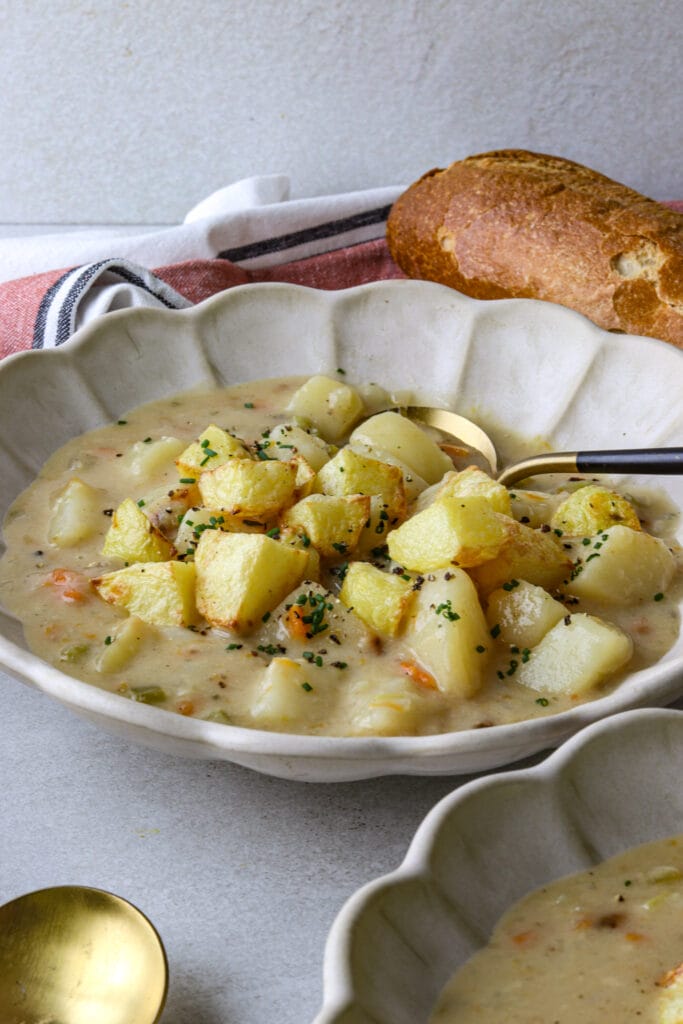
Table of Contents
With so many of my recipes, I lay out the ingredients then mention as an aside how to make it vegan. Well, not with this one! Here, the intention from the outset is to make a vegan potato soup! It’s delicious, and its lack of animal products and byproducts doesn’t mean any lack of flavor.
I like making vegan meals for a few reasons. One is my love of hosting. In particular, I love to make food for friends, but I encounter the occasional wrinkle when certain friends are limited in what they can eat. Another reason is that I like to challenge myself as a chef. The times they are a-changing, and the amount of diet-friendly options at most grocery stores is astounding. So I like to impose restrictions upon myself and see whether I can make meals that are still scrumptious.
With this Vegan Potato Soup, I think I succeeded.
Is Vegan Potato Soup Healthy?
For this recipe, I have focused on whole ingredients, in particular with the veggies. The result is a soup that is totally healthy—packed with numerous nutrients—and made for more than just a vegan diet. Those on a dairy-free diet or gluten-free diet can also partake. To make it keto, you would need to replace the potatoes with, say, cauliflower or turnip. For paleo, replace the flour with almond flour.
Which potatoes can I use?
You’ll want to use potatoes high in starch. When they are cooked, the starch breaks down and makes for a thick and creamy broth. With that in mind, look for Russet, Idaho, or Yukon Golds. Russets and Idahos, in particular, have a lot of starch, which make them great choices for soup. The Yukon Golds are slightly waxier but still have enough starch to attain the texture you desire. Waxy potatoes can be a “solid” choice, too; they keep their shape well in soups. If this is what you’re after, look for red potatoes.
INGREDIENTS
- 2 tbsp vegan butter or olive oil
- 2 medium onions, finely chopped
- 2 ribs celery, diced
- 2 large carrots, diced
- 4 cloves garlic, minced
- 2 tsp salt, more to taste
- 1/2 tsp ground black pepper, more to taste
- 4 tbsp all-purpose or gluten-free flour
- 2 cups unsweetened non-dairy milk
- 2 1/2 to 3 cups vegetable broth, divided
- 6 medium potatoes, cut into 1/2 inch cubes
- 1/4 tsp ground nutmeg (optional)
- 1 bay leaf

INSTRUCTIONS
Saute
Melt vegan butter and cook onions, celery, and carrots until softened. Add garlic and continue to saute.
Thicken
Season and add flour to create a roux. Gradually mix in non-dairy milk and vegetable broth, then add potatoes and spices.
Simmer
Allow the soup to simmer until the potatoes are tender. Adjust the thickness and seasoning as desired.
Serve
Discard the bay leaf, garnish with your favorite toppings.
Devour!

FAQs & Tips
A roux comes from French cuisine and serves as the base of many sauces and soups. You’ll encounter it many times if you have ever worked with Cajun/Creole recipes. It consists of equal parts fat (e.g., oil or butter) and flour, though some might say patience is the key ingredient, as you shouldn’t rush a roux. You need to make it over low heat, stirring constantly to achieve the desired smooth finish and caramel color.
Let the soup cool completely in the pot. Put on the lid then store it in the fridge for up to five days. You can also relocate the soup to an airtight container if you don’t trust your pot’s lid to keep the soup fresh. To freeze the soup, pour it into mason jars or several airtight containers (using more than one makes reheating easier). It should last for up to three months. Before reheating, let the soup thaw in the fridge overnight.
You don’t have to. The skin contains nutrients and provides a change in texture; if you don’t care about these elements, then peel them off.
Bay leaves add flavor and spice to the soup so you definitely want to cook with them. They don’t soften despite the hot water, however, which is why they are removed. Eating one will lead to an upset stomach (and chewing a tough leaf isn’t much fun, either). If you leave it in, at least give your guests a heads-up so they know to look for them while they eat.
Soup too thick? Add more broth or water. Too thin? Add more potatoes and let the starch thicken it up. You can also keep the lid off, allowing some of the water to evaporate and reduce the soup. The roux can also help you out here. Make some more by combining the flour with the butter/oil. Once it has achieved a caramel-like consistency, add it to the soup.

Serving Suggestions
As with most soups, the meal wouldn’t be complete without a loaf of crusty bread (though I would allow crackers if you were partial to their crunch). This is a hearty meal, perfect for lunches where it’s the entree, so you may not need to add much in terms of side dishes. You can, however, add toppings like vegan croutons, tempeh, parsley, green onion, and/or vegan cheese.

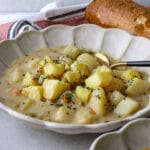
Vegan Potato Soup
Ingredients
- 2 tbsp vegan butter or olive oil
- 2 medium onions finely chopped
- 2 ribs celery diced
- 2 large carrots diced
- 4 cloves garlic minced
- 2 tsp salt more to taste
- 1/2 tsp ground black pepper more to taste
- 4 tbsp all-purpose flour or gluten-free flour
- 2 cups unsweetened non-dairy milk
- 2 1/2 to 3 cups vegetable broth divided
- 6 medium potatoes Yukon Gold or red, cut into 1/2 inch cubes
- 1/4 tsp ground nutmeg optional
- 1 bay leaf
Instructions
- In a large saucepan, melt vegan butter over medium heat. Add onions, celery, and carrots, cooking until onions begin to soften. Stir in garlic and cook for 2 more minutes.
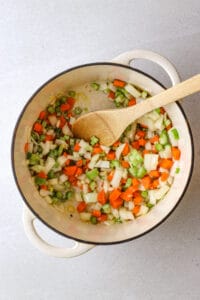
- Season with salt and pepper. Sprinkle in flour and stir for about a minute. Gradually add non-dairy milk, stirring to prevent lumps. Pour in most of the vegetable broth, reserving about 1/2 cup. Add potatoes, nutmeg, and bay leaf.
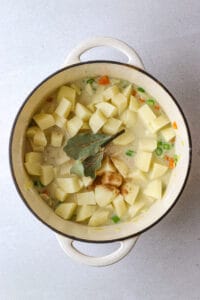
- Simmer for 30 minutes or until potatoes are tender. For a thinner soup, add the reserved broth as needed. Adjust seasoning to taste.

- Remove bay leaf. Serve hot with your choice of toppings like tempeh bacon or roasted potato chunks. DEVOUR!
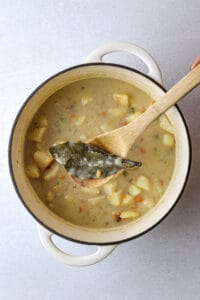
Nutrition
The post Vegan Potato Soup appeared first on Food Faith Fitness.
References:
By: FoodfaithfitnessTitle: Vegan Potato Soup
Sourced From: www.foodfaithfitness.com/vegan-potato-soup-2/
Published Date: Thu, 14 Mar 2024 11:53:09 +0000
Frequently Asked Questions
What is the difference between "regular" and smoked paprika powder?
Regular Paprika Powder (Piment d'Espelette) is an essential ingredient for our recipes. We use it for its intense flavor and color. It's also used as a spice and seasoning agent. Smoked Paprika Powder (Paprika Chorizo) adds a smoky taste and aroma to dishes. Both types of Paprika Powder come from Spain, where they grow the best peppers in the world.
Smoked Paprika Powder (Chorizo Paprika) is made from red peppers, which are dried slowly in special ovens. This gives them a rich flavor. They are then ground and mixed with salt, garlic, and spices.
Regular Paprika Powder (Espelette Paprika) is made by grinding green bell peppers without additives.
Which herbs are healing herbs?
If you look for healing herbs, you won’t find them in the supermarket. There isn’t any place to buy them. There is no store selling them.
You haven’t been able to find healing herbs because they aren’t sold anywhere. They are grown right here in our backyard.
Healing herbs are plants that grow naturally in North America. Like many common household items, these herbs grow throughout the United States and Canada.
These herbs treat minor ailments such as colds, flu, sore throats, coughs, and headaches. Many of these herbs have been used for centuries to help heal wounds and promote overall health.
Of course, when we say “heal,” we mean more than simply treating an illness. We also refer to the ability of these herbs to restore balance and harmony within ourselves and the world around us.
For example, the chamomile herb helps relieve stress. This means that if you feel stressed out, you may benefit from taking chamomile tea. Chamomile tea has been shown to reduce anxiety and nervous tension.
In addition, chamomile tea has been proven effective in relieving insomnia.
Chamomile tea has many other benefits, including its ability to ease stomach aches and gas pains and even improve digestion.
Another popular healing herb is Echinacea. Echinacea is known for helping to fight infections and boosting the immune system.
Echinacea is commonly taken internally and externally to fight infection, prevent viral diseases, and boost immunity. It is safe to use during pregnancy and lactation.
Echinacea also helps reduce muscle pain and inflammation. You can take echinacea orally or topically (as an ointment).
This herb is available in both liquid and capsule form. Liquid echinacea is often mixed with honey and lemon juice. The mixture is then strained and consumed.
Capsules are usually made of freeze-dried plant material. They contain standardized amounts of active ingredients. To use capsules, swallow one or two a day.
The third type of herbal remedy is called tincture. Tinctures are alcoholic extracts of herbs. They are typically used to treat internal problems. Tinctures are generally diluted before being ingested.
Tinctures can be taken orally or applied topically. For oral consumption, dilute tinctures with water. Some people prefer to mix tinctures with food.
Tinctures are easy to prepare. Put about one tablespoon of dried herb into a bottle containing enough alcohol to cover the herb completely. Allow the mixture to sit for several weeks. Then strain and consume.
You may want to try some of these natural remedies to see which ones work best.
What is the difference between basil and oregano?
Both of these herbs belong to the Lamiaceae family. They share similar flavors, but the differences are obvious.
Oregano is more pungent than basil. It also adds an extra layer of flavor to foods.
Basil leaves are smaller than oregano leaves. They are also softer and less aromatic.
The two herbs are often used interchangeably. Although they are quite similar, each has its distinctive qualities.
What are the side effects of basil?
Basil is an herb that originated in tropical regions of India, Africa, China, Indonesia, Malaysia, Thailand, Philippines, Mexico, Puerto Rico, Jamaica, Costa Rica, Panama, Colombia, Venezuela, Brazil, Peru, Ecuador, Bolivia, Paraguay, Uruguay, Argentina, and Chile.
The plant is easy to grow in most climates and requires little maintenance. Basil also thrives in poor soil conditions and is very drought tolerant.
As for the health benefits, more than 200 known compounds are found in basil, including flavonoids, phenolic acids, lignans, polysaccharides, essential oils, vitamins, and minerals.
According to the University of Maryland Medical Center, basil contains powerful anti-inflammatory properties which may help relieve symptoms associated with arthritis, asthma, allergies, bronchitis, cancer, cardiovascular disease, diabetes, digestive disorders, depression, eczema, insomnia, infections, migraines, osteoporosis, psoriasis, respiratory problems, stress, and ulcers.
Basil is also a culinary spice and is often added to tomato sauces, soups, salads, pasta dishes, rice dishes, dips, casseroles, pizza toppings, pesto, chicken wings, and popcorn.
However, like all herbs, basil should be consumed in moderation. Too much of anything is not good for you. For example, eating large amounts of basil could lead to stomach upset. And if you have sensitive tummies, avoid consuming basil during pregnancy.
If you are pregnant or nursing, consult your doctor before taking herbal supplements.
You should only take one type of supplement at a time. If you take other medications, make sure they do not interact with each other.
You should never use herbs while on medication unless directed by your doctor.
Some people experience allergic reactions when using herbs, especially those allergic to ragweed. Symptoms include hives, swelling around the mouth or eyes, shortness of breath, chest tightness, nausea, vomiting, diarrhea, headaches, dizziness, fainting, heart palpitations, blurred vision, loss of consciousness, seizures, or even death.
Some people who take certain medications may develop an allergy to basil. These drugs include:
- Antacids (like Alka Seltzer)
- Anti-anxiety medicines (Valium, Xanax, Ativan, etc.)
- Beta-blockers (like Propranolol)
- Blood thinners (like Coumadin)
- Calcium channel blockers (like Amlodipine)
- Cholesterol-lowering drugs (like Lipitor, Zocor, Mevacor, and Pravachol)
- Diabetes medicine (like Glucophage)
- Diuretics (like Lasix)
- Heartburn medicines (like Prilosec OTC)
- Hormone therapy (like Premarin, Tamoxifen, Femara)
- Insulin (like Humalog, Lantus, Novolin R)
- NSAIDs (like Aleve, Motrin, Advil, Excedrin, Tylenol, Ibuprofen)
- Oral contraceptives (like Ortho Evra, Yasmin, Loestrin, Ovrette, Yaz, and Seasonale)
- Pain relievers (like Aspirin, Celebrex, Vicodin, Percodan, Darvocet, Dilaudid, Fiorinal, Tylenol 3s, Naproxen, Motrin, Tramadol, Ultram, Voltaren
What is the difference between herbs and spices?
Herbs are used for cooking, and spices are used for seasoning.
Herbs have more intense flavors and can be used to cook dishes, while spices can bring out the flavor of foods without altering the taste.
Spices can also be added to food during preparation, such as curry. Spices may be bought individually, or whole packages may be purchased. There are many spices, including black pepper, cayenne pepper, cinnamon, cloves, coriander, garlic, ginger, nutmeg, oregano, paprika, parsley, rosemary, sage, salt, thyme, turmeric, vanilla extract, etc.
The best way to ensure that you are selecting the right spice for your dish is to read the label carefully. If there is an ingredient list, look for "spice" among the ingredients. A common mistake cooks make is buying too much of a particular spice because they do not realize how little they need.
There are a few basic rules to follow when choosing which herb or spice to use. For example, most herbs are fresh, whereas spices tend to last longer. Also, herbs are generally found in small quantities, while spices come in larger containers. Finally, most herbs are usually sold loose (or ground), while spices are packaged in jars or cans.
As long as you are careful to select the correct herbs or spices, you will find that adding them to recipes makes preparing meals easier. After all, spices add flavor to various dishes, while herbs can help improve the appearance and aroma of food.
What spice is good for inflammation?
Turmeric is one spice that can be beneficial for reducing inflammation. It contains the active ingredient curcumin, which has been studied extensively and shown to have anti-inflammatory effects on the body. Other spices like ginger, cinnamon, cayenne pepper, garlic, and cardamom may also reduce inflammation in the body. Adding these spices to your diet can help reduce inflammation and promote overall health.
Another spice that can be used to reduce inflammation is black pepper. The active ingredient in black pepper, piperine, has been studied and found to have anti-inflammatory properties. It may also help reduce pain associated with inflammation. Additionally, the spice contains antioxidants which are beneficial for overall health.
Adding black pepper to your diet may help reduce inflammation and promote overall health. Be sure to talk with your doctor before adding any spice to your diet, as some spices may interact with your medications or supplements. Eating various healthy foods, including spices with anti-inflammatory benefits, can help keep your body balanced and reduce the risk of chronic inflammation-related illnesses.
In summary, adding spices to your diet can be beneficial for reducing inflammation and promoting overall health. Spices like turmeric, ginger, cinnamon, cayenne pepper, garlic, cardamom, and black pepper have all been studied for their potential anti-inflammatory effects.
Which spices from the kitchen are used to cure diseases?
There are more than 4000 medicinal plants that are widely distributed throughout the world. Some of these plants contain active compounds that may help treat various ailments.
In India alone, there are more than 1000 species of herbs that are used for medical purposes. This includes Ayurvedic medicine, Unani medicine, Siddha medicine, Homeopathic medicine, and Chinese medicine.
The most common ingredient found in these medicines is ginger. Ginger contains volatile oils that give it its aromatic flavor. These oils contain anti-inflammatory properties that make them useful against arthritis, fever, vomiting, and indigestion.
Ginger also helps relieve nausea and stomach cramps caused due to pregnancy. Pregnant women often consume ginger tea to reduce morning sickness. Ginger is also commonly used for cough and cold relief.
Another spice that is known to have medicinal value is turmeric. Turmeric contains curcumin which has been shown to inhibit tumor growth. This makes it an effective cancer treatment.
Turmeric is also considered to be very beneficial for joint health. It relieves inflammation and stiffness associated with rheumatoid arthritis. It is also believed to prevent osteoporosis.
Garlic, too, is another herb that is extensively used in traditional medicine. Its healing qualities include treating infections, asthma, heart disease, and diabetes and even reducing cholesterol levels. Garlic oil is also used to treat wounds and insect bites.
Garlic is a natural antibiotic that fights bacteria and viruses. The antibacterial property makes it ideal for treating respiratory tract infections such as bronchitis and pneumonia.
It is also helpful in preventing urinary tract infections.
Other spices like cinnamon, cloves, nutmeg, cardamom, black pepper, ginger, cayenne, mustard seeds, fennel, and coriander are also used to treat different illnesses.
Statistics
- The herbs market is highly competitive, with over 1,000 herb suppliers and over 15,000 herbs products available in the United States alone.
- For those with high cholesterol, garlic supplementation appears to reduce total and/or LDL cholesterol by about 10-15% (72Trusted Source73Trusted (healthline.com)
External Links
[TAG34]
- Peppermint oil (Mintoil®) in the treatment of irritable bowel syndrome: A prospective, double-blind placebo-controlled randomized trial
- Curcumin reverses the effects of chronic stress on behavior, the HPA axis, BDNF expression, and phosphorylation of CREB
[TAG37]
[TAG39]
- Antioxidant capacity of 26 spice extracts and characterization of their phenolic constituents - PubMed
- Cinnamon: A Multifaceted Medicinal Plant - PMC
[TAG42]
How To
How To Upcycle Herbs After Making Infusions, Oils, Tinctures, And More?
There are more ways to use herbs than you might realize. This is why it's essential to keep an open mind when learning how to make herbal infusions, oils, tinctures, and more.
You'll find that there are many methods for making these products, and even though they may seem similar, each method has its benefits.
For example, some methods include creating decoctions, boiling water or alcohol with the herb(s), and letting them simmer for a while. These infusions are solid and potent because they contain higher concentrations of active compounds.
Another type of infusion includes macerating the herb(s), which means soaking them in liquid for a few hours or even overnight. Macerations tend to produce milder results because the plant material isn't boiled.
Some cold-infused forms involve steeping herbs in cool liquids such as ice cubes or cold water. Cold infusions are gentler than hot ones, often used to treat minor ailments.
Herbal oil extraction involves heating the herb(s) to release the essential oils. You can either do this yourself or have someone help you out with it.
Finally, there are tinctures made by mixing herbs with alcohol. They're usually taken orally and are very effective for treating coughs, colds, and flu symptoms.
The best way to learn how to create infused products is to experiment with various techniques. Each technique offers a different potency and effectiveness, depending on the herb(s) you choose.
Once you've tried a few different methods, you'll begin to develop your preferences. In time, you'll be able to determine which techniques work well for you and which aren't worth pursuing.
 |
[TAG44]This Irish kale colcannon recipe is perfectly buttery and fluffy and easy to make with a handful of basic ingredients. St. Patrick’s Day is just around the |
 |
[TAG45]Hello hello! Just wanted to pop in with a cute little life update. ♡ I’m delighted to share that our sweet son, Milo Alexander Martin, came to join our family |
 |
[TAG46]Easy to make full flavoured recipes. Life is too short for boring food! |
 |
[TAG47]This vibrant lemony broccoli pesto pasta is quick and easy to make and full of fresh flavors. Your veggies, greens, and pasta…all in one gorgeous dish! ♡ We’re |
 |
[TAG48]This simple roasted carrot soup recipe is made with creamy tahini and topped with crispy za’atar chickpeas. Naturally gluten-free, vegetarian and vegan. If you |
 |
[TAG49]HEALTHY & KID-FRIENDLY MEALS easy dinner recipes made in minutes. The Latest Recipes st. Patrick's Day Recipes Hello! I'm Sara! Welcome to Dinner at the Zoo! |
 |
[TAG50]My longtime favorite flourless cake recipe is decadently rich and delicious, naturally gluten-free, and easy to make in under 1 hour! Trust me, this flourless |
 |
[TAG51]This vegetarian cabbage roll soup is filled with protein-rich lentils and all of the delicious flavors you love from traditional cabbage rolls. Naturally |
 |
[TAG52]From comfort foods to indulgent dishes browse hundreds of recipes that your family will love and make over and over again. Cooking Classy has never been easier, |
 |
[TAG53]These zesty roasted sweet potato and chickpea bowls are layered with sautéed spinach and brown rice and tossed with my favorite 4-ingredient chipotle tahini |
 |
[TAG54]This classic matcha latte recipe is easy to make and customize to your liking and always so delicious. The older I get, the more I’m convinced that one of |
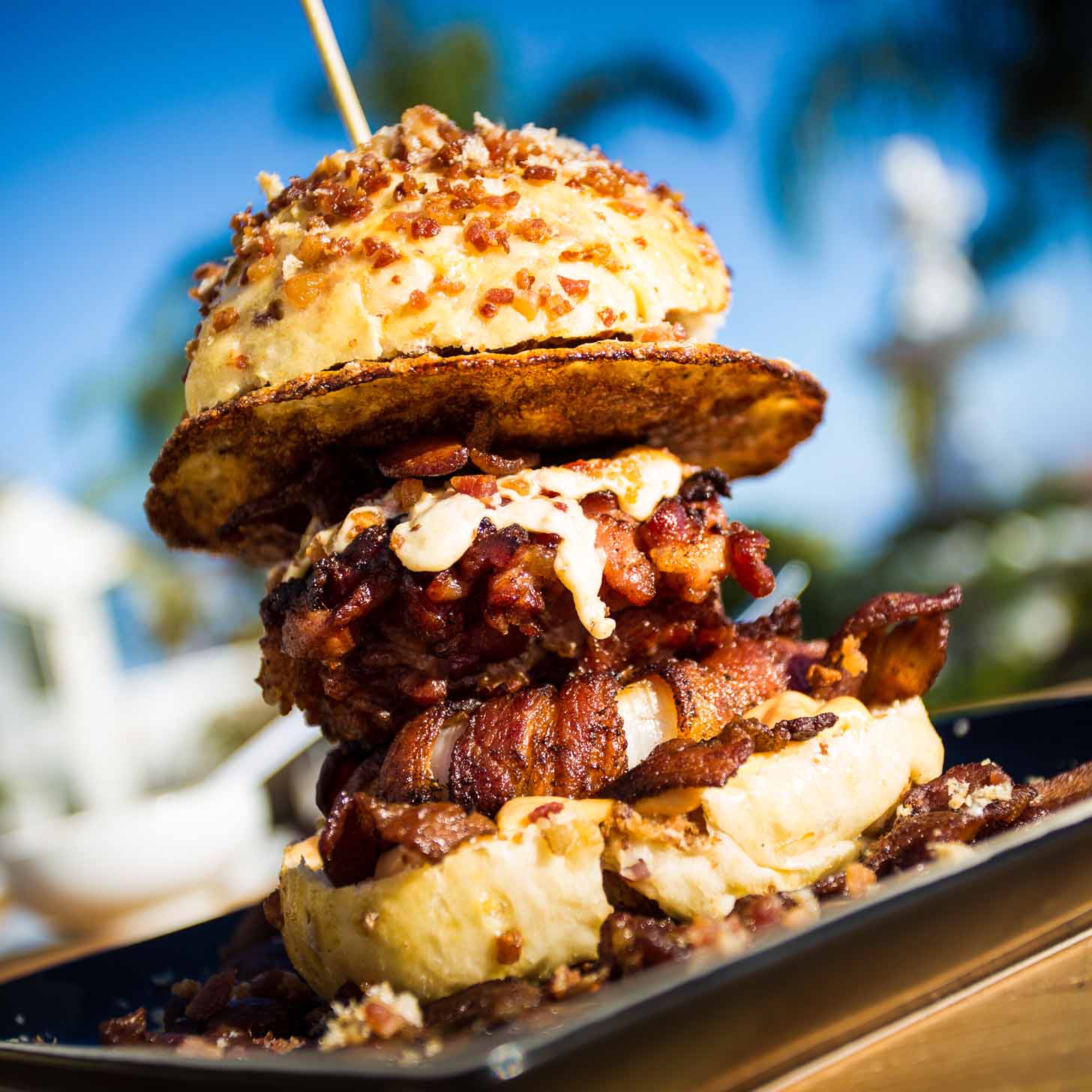 |
[TAG55]A family food blog with hundreds of simple, tested and approved recipes. Find easy step-by-step photo cooking instructions and video recipes. |
 |
[TAG56]This veggie-loaded broccoli cheese soup recipe is perfectly velvety and creamy without using heavy cream. Instant Pot, Crock-Pot and stovetop options all |
 |
[TAG57]This winter farro salad recipe is made with the most delicious blend of seasonal fruit, greens, nuts, crumbled cheese and tossed with a vibrant orange ginger |
 |
[TAG58]find out hundres of delicous food recipes |
 |
[TAG59]This lovely white wine sautéed mushrooms recipe is quick and easy to make, full of rich savory flavors, and can pair well as a side dish with many different |
 |
[TAG60]This traditional Swedish meatballs recipe is bursting with rich, savory flavors and topped with a creamy gravy. Always so comforting served over mashed |
 |
[TAG61]The food blog with mostly healthy recipes made with real, whole foods inspiring more people to get into the kitchen and cook something good. |
 |
[TAG62]This classic Irish coffee recipe is easy to make with 4 ingredients in just a few minutes. Always so warm and cozy! Let’s warm up with a hot mug of Irish |
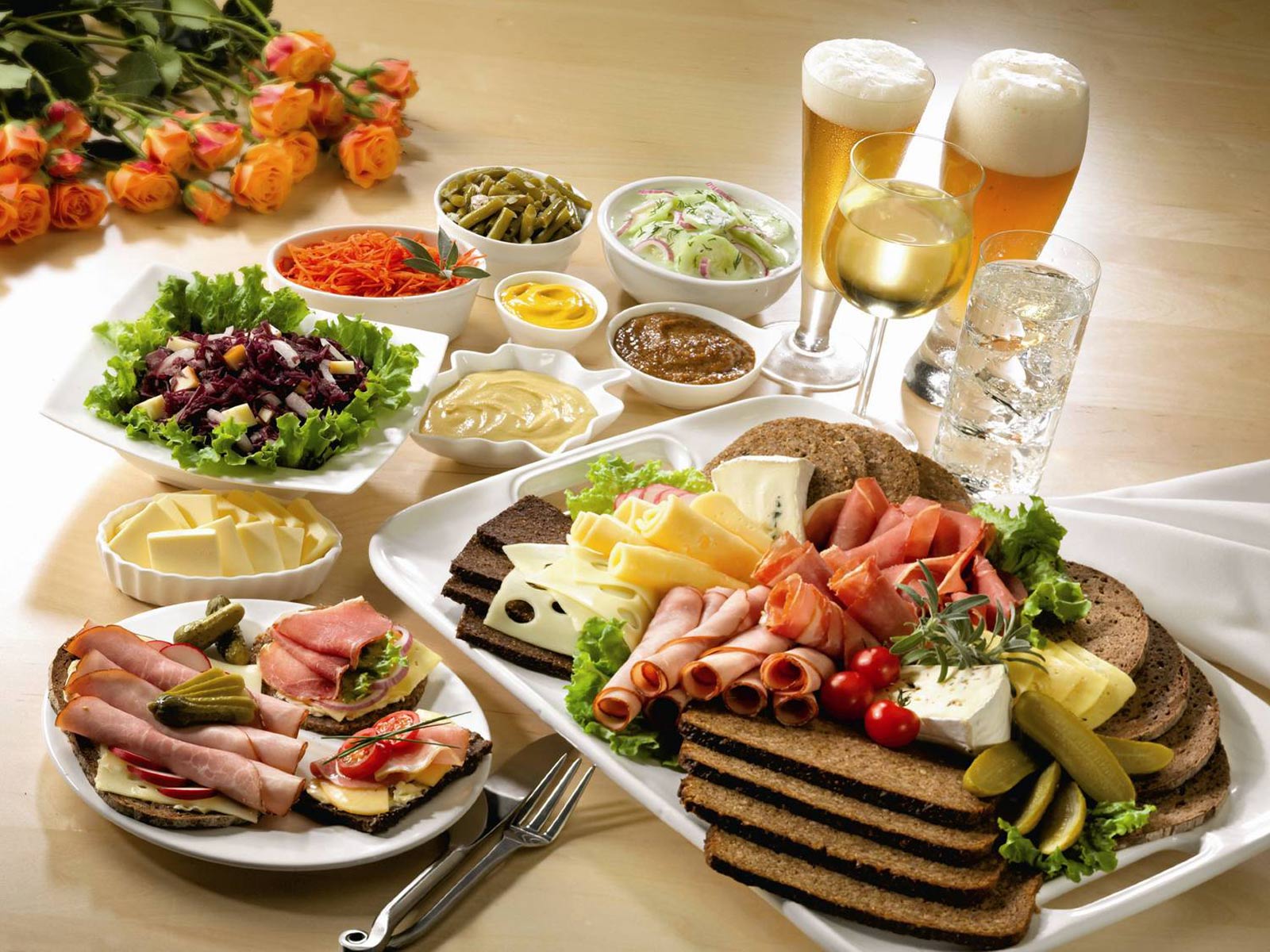 |
[TAG63]A food blog with hundreds of quick and easy dinner recipes. Classics done right, incredible one pot recipes, Asian takeout at home and holiday feasting! |
Did you miss our previous article...
https://belovedsaffron.com/recipes/baked-frittata
.png)





